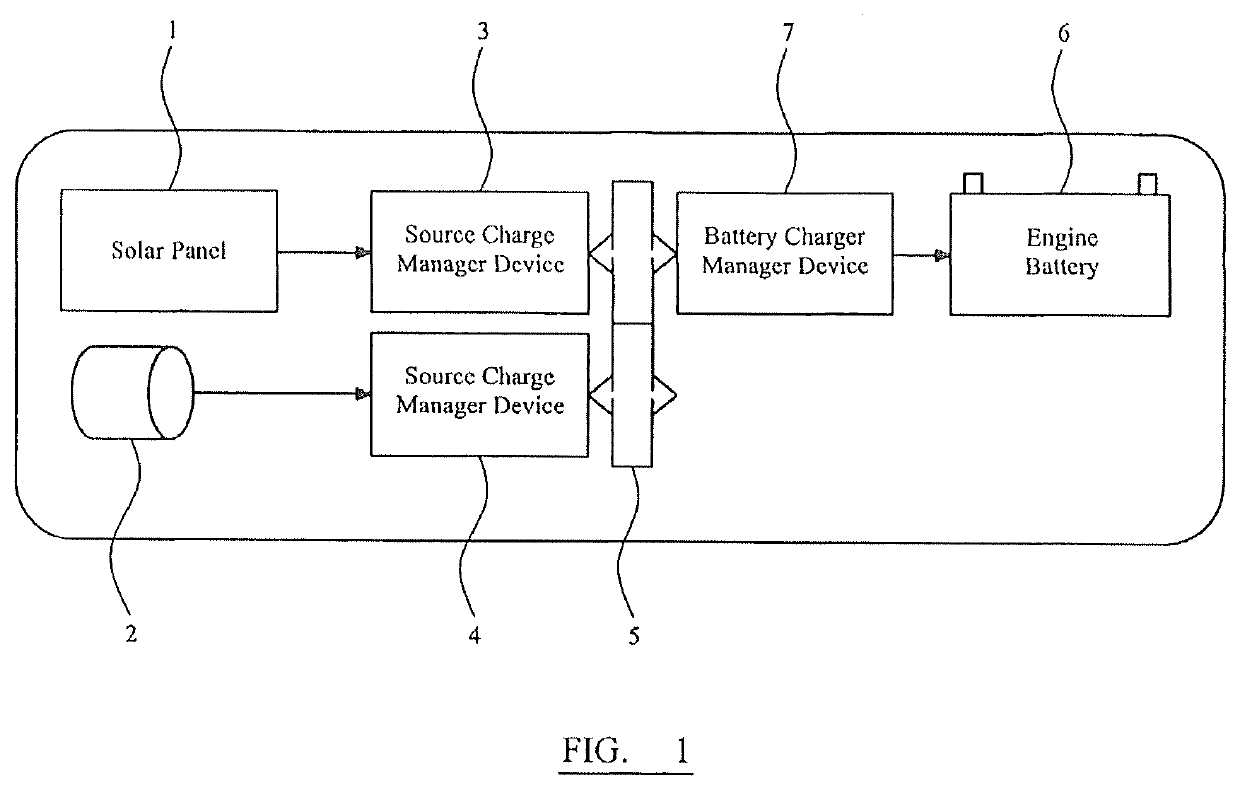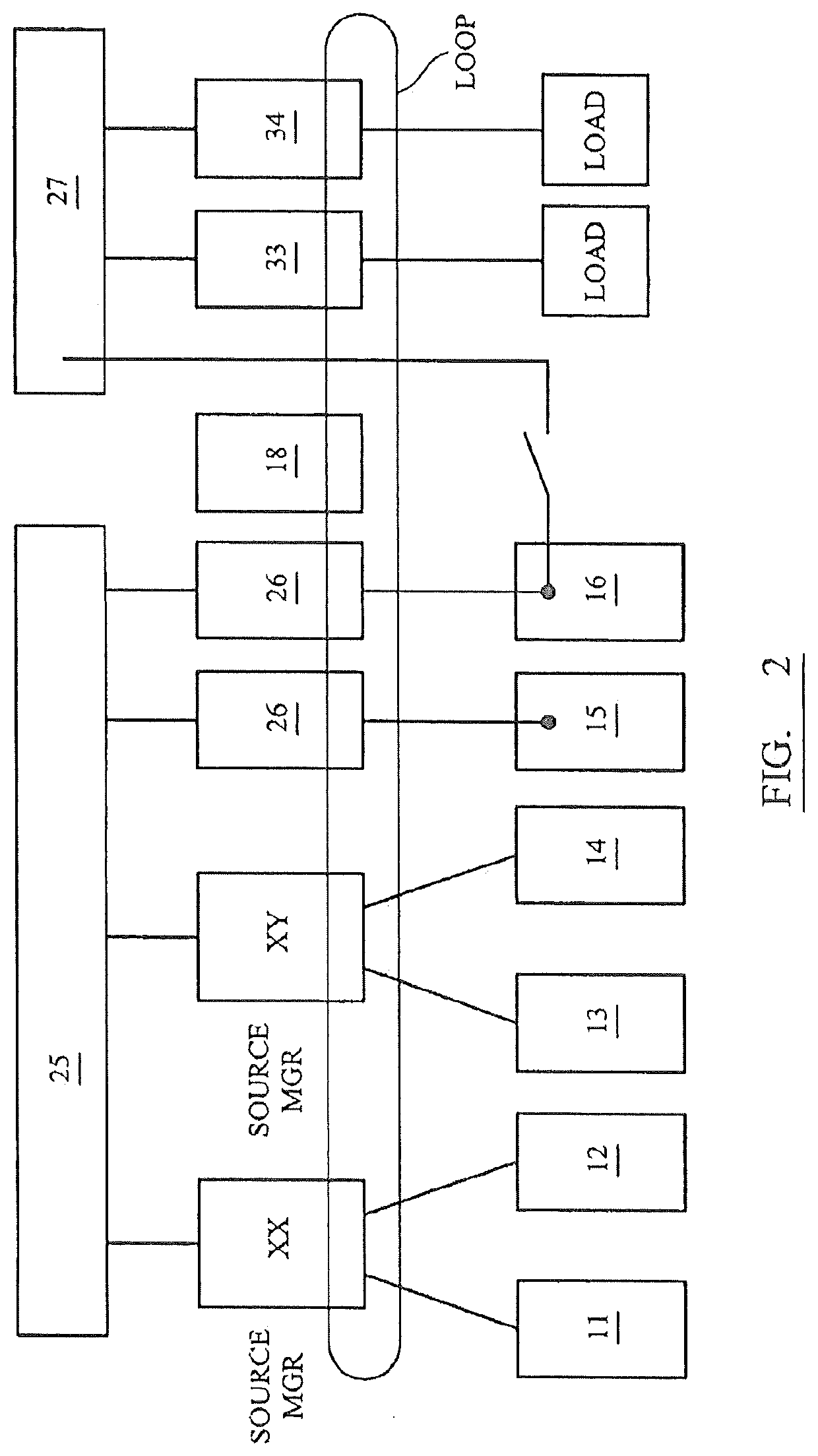Charging Bus
- Summary
- Abstract
- Description
- Claims
- Application Information
AI Technical Summary
Benefits of technology
Problems solved by technology
Method used
Image
Examples
Embodiment Construction
[0018]FIG. 1 shows schematically an arrangement of the charging bus. The boat is provided with a first power source, solar panels 1 and a second power source, engine alternator 2. Each of the power sources 1, 2 is connected to a respective manager device 3, 4, which in turn is connected to a charging rail5. A battery 6 is connected via charging manager 7 to the charging rail 5. The rail voltage can be chosen to be any particular voltage or range of voltage.
[0019]The basic method of operation is that sources of a lower voltage than the rail 5 get their power delivered at Rail voltage by a method which increases the voltage by the use of the respective manager device 3,4 such as an active or switching converter and sources with a voltage higher than Rail use a voltage dropping method, preferably lossless, by the respective manager device 3,4 such as a switching converter. Each such converter will be appropriate to the needs of the source as in the following examples:
[0020]1. A solar p...
PUM
 Login to View More
Login to View More Abstract
Description
Claims
Application Information
 Login to View More
Login to View More - R&D
- Intellectual Property
- Life Sciences
- Materials
- Tech Scout
- Unparalleled Data Quality
- Higher Quality Content
- 60% Fewer Hallucinations
Browse by: Latest US Patents, China's latest patents, Technical Efficacy Thesaurus, Application Domain, Technology Topic, Popular Technical Reports.
© 2025 PatSnap. All rights reserved.Legal|Privacy policy|Modern Slavery Act Transparency Statement|Sitemap|About US| Contact US: help@patsnap.com


